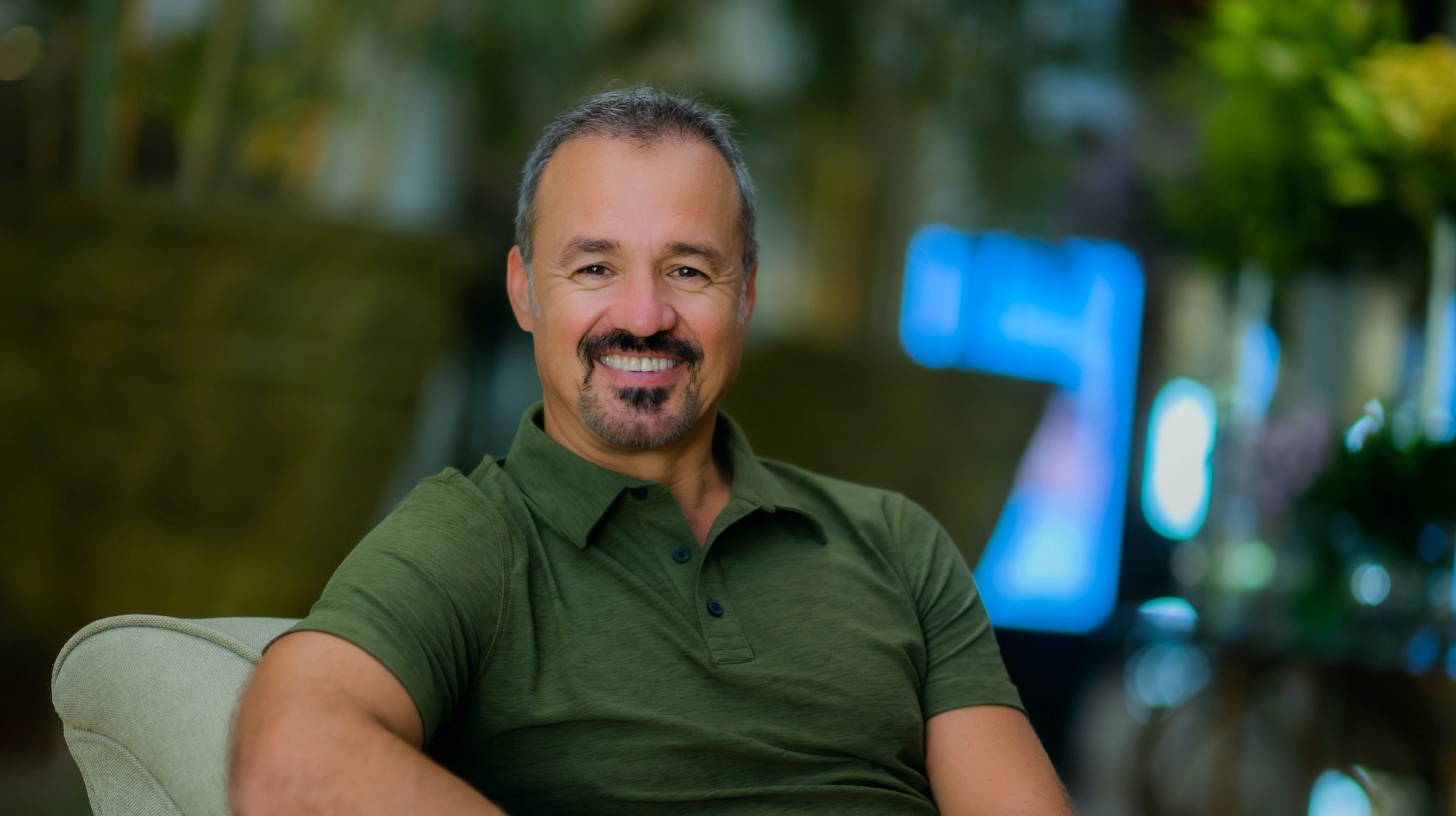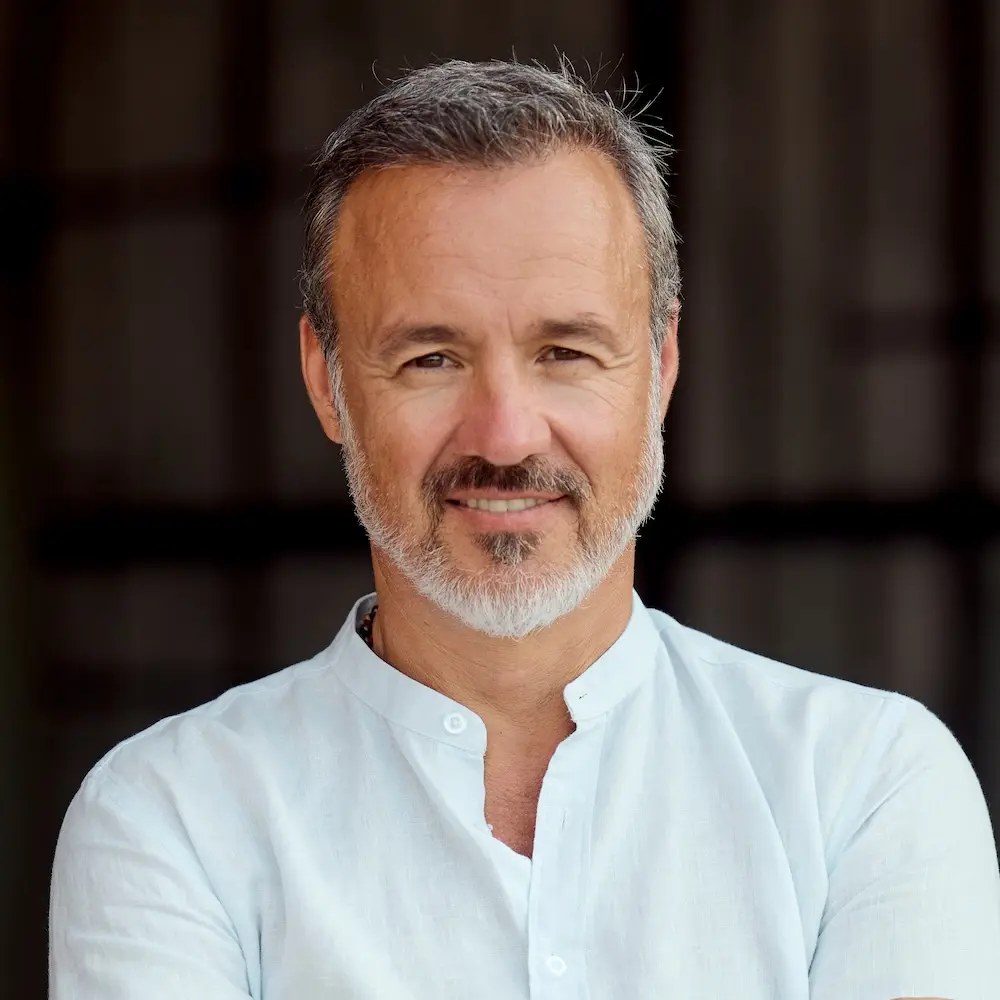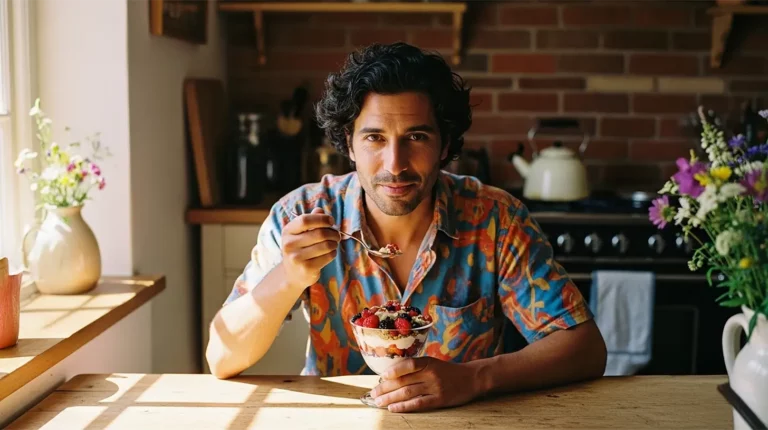“I can’t eat that. I’m on a diet.”
How often do you find yourself saying that (or something similar)? Or have you experienced a pang of guilt after indulging in your favorite comfort food?
As a society, we’ve become ensnared in a vicious cycle of yo-yo dieting and the false promise of the perfect figure. But what if you could break free from these constraints and, instead, eat what you want without guilt or shame while maintaining optimal health?
Welcome to food freedom.
“Food freedom means eating what you want, whenever you want, as much as you want, without feelings of guilt or shame,” says Eric Edmeades, the founder of WILDFIT and trainer of the Mindvalley Quest with the same name, “but it also means being free to not eat what you wish you wouldn’t eat without regret or feelings of missing out.”
But it’s one thing to know what to eat, what’s healthy, and what’s good for you. But it’s a whole other thing to put it into practice.
And understanding how to eat consciously is the first step to a healthier lifestyle.
What is food freedom?
Food freedom is the antithesis of the restrictive diet culture that we, as a society, have been conditioned to accept. It’s the idea that you can enjoy the foods you love without the accompanying guilt or worry about your waistline; that you can break free of the twin powers of the manipulative food industry and the restrictive diet industry.
But more than that, it’s about tuning into your body’s cues, nourishing it properly, and freeing yourself from the thought that food is an enemy to be fought. Food is, after all, a source of sustenance and joy, not a battleground.
Your health is far more dependent on you getting enough of the good stuff than it is on you eliminating the bad stuff. — @EricEdmeades Share on XSo this freedom doesn’t mean consuming food for your mood; it means understanding your body’s needs and responding appropriately.
It’s about being conscious, balancing your meals to incorporate all food groups, and knowing that an occasional slice of pizza won’t derail your health. It’s a holistic approach that looks beyond just weight loss, focusing on health, wellness, and the sheer joy of eating.
But how did we arrive at this revolutionary concept? Let’s journey back to its roots.
Introducing Eric Edmeades, the father of food freedom
Food freedom is not merely a catchphrase; it’s the philosophy—championed, of course, by Eric Edmeades.
As a trailblazer in the realm of health and wellness, he has spent years studying human diet, health, and our complex relationship with food. He understood that the prevailing fad diets, with their focus on restriction and denial, were fundamentally flawed. This realization led him to develop a revolutionary approach to health and nutrition: WILDFIT.
Because here’s the thing: “Diet,” as Eric highlights, isn’t what we understand it to be today—the “temporary alteration of your life for short-term gain.” Rather, it means “way of life.”
And so, WILDFIT is not a diet plan. It’s a lifestyle shift.
Drawing from human evolutionary history and the latest nutritional insights, it offers you a roadmap to sustainable health and well-being. By making mindful choices and understanding your body’s needs, you not only improve your health but also cultivate a positive relationship with food, thus unlocking your food freedom.
Food freedom vs. intuitive eating vs. mindful eating
You might have heard about intuitive eating and mindful eating and wondered if these were synonymous with food freedom. While these concepts share common ground, there are nuances that set them apart.
Here’s a side-by-side comparison of the three:
| Food freedom | Intuitive eating | Mindful eating | |
| Focus | Nutritional needs, seasonal influences, societal pressures, and marketing influences | Body’s hunger and fullness cues | Attention to the experience of eating |
| Goal | Achieve optimal health and well-being through a balanced, flexible approach to eating | Foster a healthy relationship with food by listening to the body’s signals | Encourage full presence during meals to enhance enjoyment and prevent overeating |
| Approach | Comprehensive and holistic | Physiological | Psychological |
| Incorporates | Principles of intuitive and mindful eating, with an emphasis on understanding how various factors affect eating habits | Internal physical cues | Mental awareness during eating |
| Relationship with food | Encourages healthy, flexible, and balanced relationships with food | Focuses on rejecting diet mentality and embracing the body’s natural signals | Fosters an understanding and appreciation of the eating process with attention to flavors, textures, and feelings during meals |
| Social and environmental factors | Recognizes and addresses the influence of marketing and societal pressures | Does not specifically focus on these elements | Does not specifically focus on these elements |
While intuitive and mindful eating aim to free you from diet culture, freedom from food provides a more comprehensive framework. Eating what you want is one aspect, but understanding the “why” behind your eating habits is the other.
The origin of “food freedom”
The term “food freedom” is the main idea of the WILDFIT program—one that aims to transform your perspectives on eating and health.
But where did the concept originate? To find the answer, let’s travel back in time.
Human beings, much like other creatures, evolved to survive and thrive on the foods available in their environment. Our ancestors didn’t have the luxury of year-round access to fruits or the ability to import exotic foods. Their diet varied with the seasons, which influenced their nutritional intake.
Unfortunately, that’s not the case today. Based on a CDC report, almost half (44.9%) of young Americans aged 20–39 eat fast food every day. (The next group, aged 40–59, is not far behind (37.7%), with those Americans aged 60 and above (24.1%) coming right after.)
The more closely a species adheres to their naturally evolved diet, the healthier that species will be.
— Eric Edmeades, trainer of Mindvalley’s WILDFIT Quest
This evolutionary perspective forms the bedrock of food freedom. And Eric’s WILDFIT encourages you to align your diet with the natural rhythm of the seasons, thereby supporting your health and well-being.
How does food freedom feel and look?
Picture this: You’re at a social gathering filled with tantalizing dishes. There’s pizza, crispy fried chicken, steak, pasta… And let’s not forget the dessert: brownies a la mode, tiramisu, macarons, and all sorts of delicious eats.
The thing with today’s diet is that it’s sugar-rich. And sugar, if you don’t already know, activates the brain’s reward system, releasing a “feel-good” neurochemical called dopamine.
In her TED Talk, Dr. Nicole Avena, a research neuroscientist and an expert in the fields of nutrition, diet, and addiction, explains that if you eat too much sugar, the dopamine response does not level out as it would with nutrient-rich foods.
“In other words, eating lots of sugar will continue to feel rewarding,” she adds. “In this way, sugar behaves a little bit like a drug. It’s one reason people seem to be hooked on sugary foods.”
Now imagine that instead of fretting over calories or giving in to your food cravings, you calmly choose what you wish to eat. You savor each bite without guilt or regret, fully enjoying the experience.
This is food freedom in action.
According to Eric, “We want to learn the mechanisms that drive us.” So that means being conscious of what you’re plating up.
The fact is, when you get food freedom, it’s far from indulgence. It leans more toward balance.
It’s a healthy plate filled with seasonal fruits, vegetables, and proteins. But it’s also allowing yourself the occasional dessert.
It’s about honoring your body’s needs. But it’s also not worrying about societal judgments or unrealistic beauty standards.
And with all that comes peace of mind, knowing that you’re providing your body with what it needs, not what a diet plan prescribes.
How to achieve food freedom: 3 simple tips from Eric Edmeades
There isn’t a strict set of rules when it comes to freedom from food. Rather, you’re encouraged to tune in to your body and make informed choices.
Here are some actionable steps from Eric Edmeades to guide you on your journey:
1. Listen to your body
When you cut your finger, your body knows how to heal it. When you’re cold, it shivers to warm you up. So, it’s no surprise that it knows what nutrients it needs.
Let’s take your cravings, for example. They’re often seen as the villains in your journey towards healthier living. However, they’re more like misunderstood messengers.
If you’re craving salty foods, it could be your body’s subtle way of saying, “Hey, we’re running a little low on sodium.” And those sugar cravings? That could be your body’s way of screaming out for quick energy.
Sometimes, cravings can run deeper than the need for certain nutrients. They might be linked to our emotions and memories.
In a Mindvalley WILDFIT webinar, Eric shares a story about a woman who had a Godzilla-sized hankering for icing. But the plot twist? This craving had less to do with a sweet tooth and more to do with her mom.
Turns out, she used to bake with her mother, who had just found out she has early-stage dementia. So eating icing brought back precious memories of laughter and love with her mother.
Realizing her craving was her body’s way of trying to connect with her mom was a lightbulb moment. Once she saw it for what it was, the power of the craving and her anxiety fizzled out. It was her body’s clever way of flagging up what it needed.
Try this today
The itch for certain foods isn’t just about the physical; it’s also about the emotional and psychological. The trick is to listen, understand, and then act—in that order.
So, next time you feel a craving coming on, don’t panic. Take a breath, have a chat with your body, and see what it’s really trying to tell you.
How WILDFIT has helped others
“The program has helped to recognize the mental processes behind cravings. The journey has just started with the completion of the 13-week program; I am determined to keep going and improve, day by day, my health.”
— Stefano Iorini, managing director; Dubai, United Arab Emirates
2. Embrace seasonal eating
Here’s the beauty of your body: it instinctively knows to adjust to nature’s cycles. This is what’s known as the seasons of the human diet.
“There are some seasons, for example, where your body knows that the best thing to do is to actually put on some weight,” Eric explains. “And then there’s another season where your body knows that it’s good to release weight. And another season where your body knows that it’s good to burn old sick proteins.”
Think about it this way: in nature, different seasons bring different foods. For example, summer offers a bounty of juicy fruits and fresh vegetables, while winter tends towards more hearty root vegetables and preserved foods.
Embracing this concept of seasonal eating does more than just nourish your body; it brings you closer to nature, reminding you of your intrinsic connection to the world around you. It’s a beautiful way of acknowledging that you’re part of a larger cycle, a grand rhythm that’s been playing out for millennia.
Try this today
Pay attention to what’s in season where you live. Visit your local farmers’ market or grocery store, and choose fruits and vegetables that are fresh and abundant for this time of year.
Remember, it’s not about perfection but about gradual change and increasing your connection with nature’s cycles. This small step can make a big difference in your overall health and well-being, and it’s an excellent way to start embracing your food freedom.
How WILDFIT has helped others
“It’s not a fad diet; it’s therapy. I experienced several epiphanies:
- I eat based on how I feel, which includes what I eat and how much I eat;
- I eat based on unconscious food rules I created from past hurts and what is familiar; and
- Food can be preventive medicine.
…I’ve lost 26 lbs., 4 inches off my chest, 4 inches off my mid-section, 3.75 inches off my waist, and 3.5 inches off my hips.”
— Deborah Braxton, consultant; Rossville, United States
3. Question societal norms around food
“You are what you eat,” goes the saying. But have you ever considered that what you eat might be dictated more by society and clever marketing tactics than by your own individual choices?
According to Eric, the food industry has a lot to gain from our appetites. It’s a bit like an invisible puppeteer pulling the strings of our dietary habits, sometimes without us even realizing it.
Take, for instance, the sly and oh-so-smart inclusion of sugar in almost everything we consume. And it does more than just sweeten the pot—as he points out, it stimulates our appetite, making us crave more and more.
That’s a win-win for the food industry: the more we eat, the more we buy. And the more their profits soar. It’s not exactly a conspiracy theory; it’s just good business…for them.
But what about us, the consumers? It’s like walking into a sugary minefield every time we go grocery shopping, isn’t it?
The idea here isn’t to create paranoia but rather to encourage mindfulness. Take the steps to understand the role that external influences play in your diet and exercise your power to choose wisely.
Because, yes, you do have that power.
Try this today
During your next grocery shopping trip, make it a mission to read food labels diligently. Be on the lookout for hidden sugars or ingredients you don’t understand
Also, make at least one healthier swap—perhaps choosing whole fruits over canned ones with added sugars or opting for whole grains instead of refined ones.
By doing so, you’re taking a significant step towards taking back control of your diet, exercising your power as a consumer, and moving closer to true food freedom.
How WILDFIT has helped others
“Lots of learning and insights about the food industry, nutrition, habits, food psychology, techniques, and above all, leading a healthy lifestyle. Truly, an eye-opener!
I have not only lost 7 kg and am very close to achieving my desired weight, but I have also lost 5 inches from my waist. Moreover, sleeping better, waking up fresh, staying active throughout the day, and having better focus. Now, I can easily fit in my clothes, which I couldn’t wear for years.”
— Ali Faisal, advisor for the telecom sector; Riyadh, Saudi Arabia
Taste the freedom
Here’s what comes when you find food freedom: a healthier, happier you—one who savors every bite without the shadows of guilt or anxiety lurking around. Sure, exercise and all that can help bolster your health, but, as Eric says, “food is what starts the journey.”
A great place to start is with the Mindvalley WILDFIT Masterclass. It’s led by none other than Eric Edmeades and is 100% FREE.
Know, though, that this isn’t your run-of-the-mill nutrition course. It’s about gaining back control, breaking free from the restrictive shackles of diet culture, and rediscovering the sheer joy of eating. And it’s not short-term; it’s long-lasting.
And the thing is, drastic weight loss isn’t even the best thing the 20,000+ people who’ve gone through WILDFIT have experienced—it’s the health benefits. Allergies have disappeared, the skin has cleared up, energy levels have increased, the body just functions better, and people get that WILDFIT glow.
The fact of the matter is, food freedom is not just a possibility. It’s within your reach.
Welcome in.









